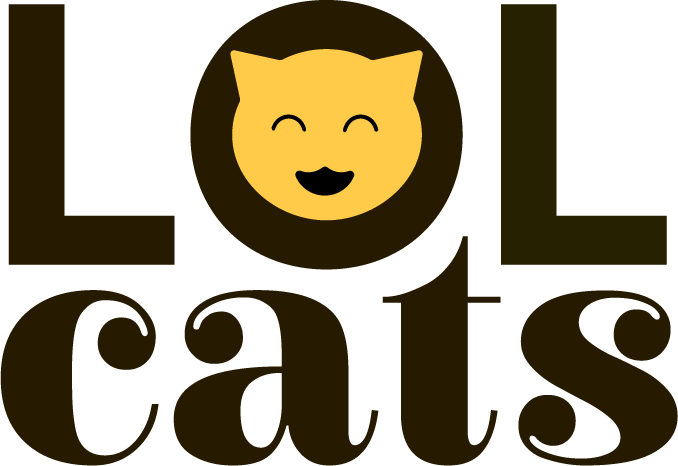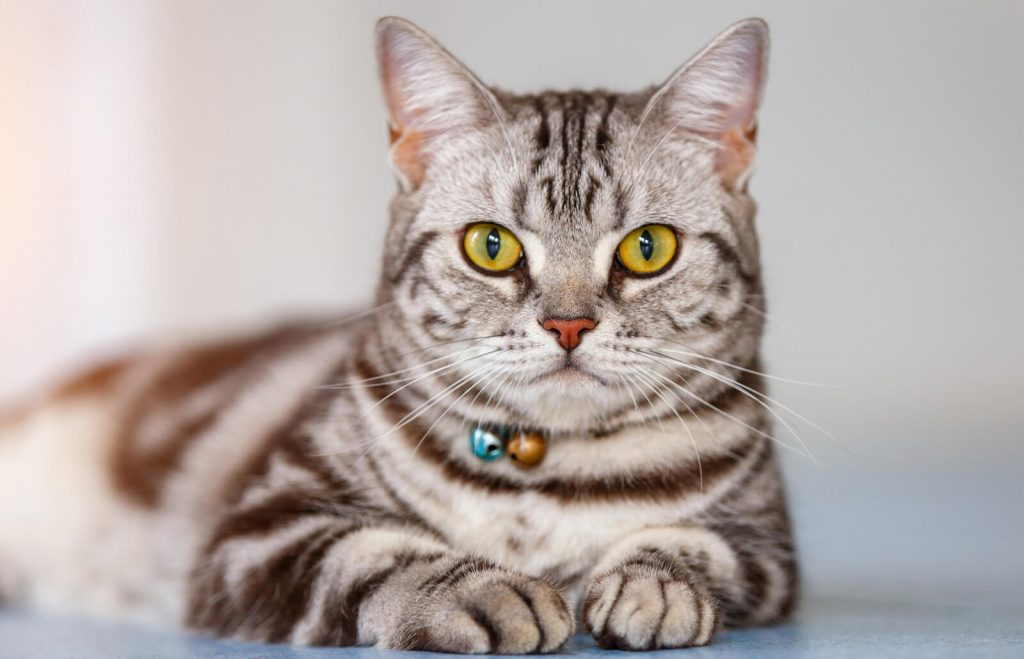17 Fun Facts About Tuxedo Cats
This page contains affiliate links. We may earn money or products from the companies mentioned in this post through our independently chosen links, which earn us a commission.
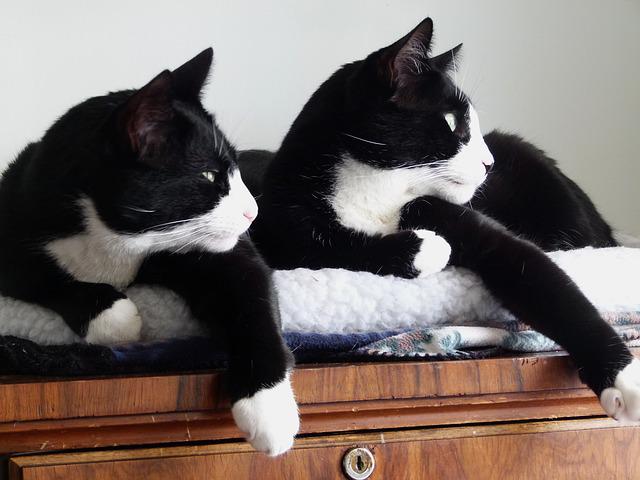
Tuxedo cats also known as tuxes, are absolutely gorgeous felines due to their bi-colored black and white coats.
Black and white color coat patterns come in different types including cap-and-saddle, mask-and-mantle, cow or van patterns.
The van pattern describes a white cat with black markings only on the tail and head. The cap-and-saddle pattern describes a black head cat with white on other body parts including the ears, back, and tail. The mask and mantle cat has black fur on top of her head down to her back and tail while the rest of the body is white. The cow pattern describes a white cat with black patches on the torso.
A tuxedo cat has a solid black coat with white patches on the paws, chest, throat, belly, and chin. In some instances, the bicolor predominance may be switched resulting in a reverse tuxedo cat. These cats are mostly white with black chests and faces.
The black and white coat pattern makes tuxedo cats look like they are wearing a tuxedo suit. Tuxedo cats with white paws look like they are wearing white socks, boots, or spats. Other tuxedo cats have black spots on their white chest making them appear like they are wearing a bowtie. Others have black fur around their eyes and a white nose or chin making them appear like they are wearing a mask.
Undoubtedly, these cats are truly gorgeous!
Apart from their great looks, here are more fun facts about Tuxedo cats.
#1 Tuxedo Is Not A Cat Breed But Rather A Coat Pattern
There’s no such thing as a tuxedo cat breed. It’s rather a two-colored coat pattern popular among cat breeds such as:
- Domestic Shorthair
- British Shorthair
- Turkish Van
- Cornish Rex
- American Shorthair
- Exotic Shorthair
- Manx
- Maine Coon
#2 Genetics Causes The Tuxedo Coat Pattern
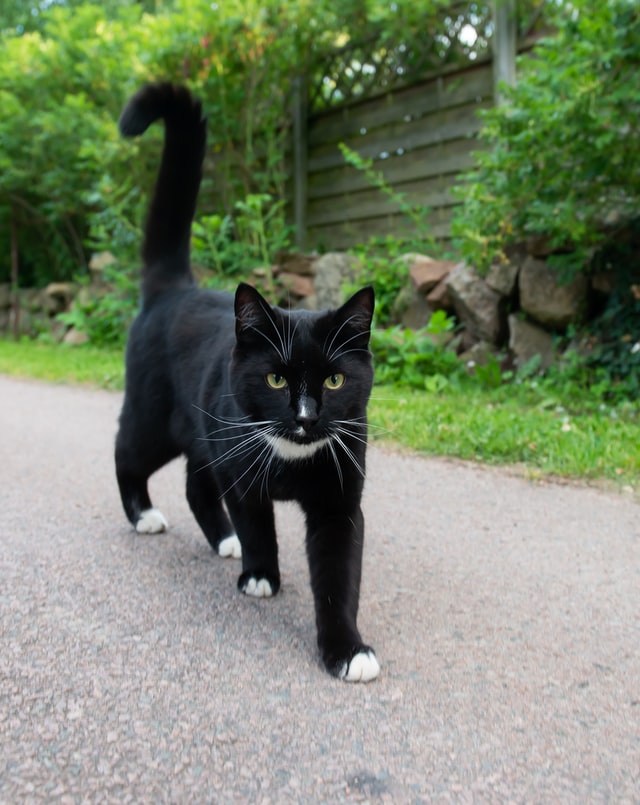
It was long believed that the distinctive coat in a tuxedo cat is a result of inactive pigment cells that spread incorrectly to the embryo before it’s fully formed.
However, researchers have now confirmed that the pigment cells don’t follow a particular genetic instruction when it comes to coat color, but rather they move and multiply randomly during embryo development.
The unique coat pattern of a tuxedo cat is determined before they are born by a faulty gene called the Kit. The faulty Kit gene which is responsible for the white coat is unable to multiply at a normal rate. If a few pigment cells populate the cat’s skin, the result will be white patches. The white gene can either be dominant or recessive.
What’s special about these cats is that the black color doesn’t make them tuxedos but rather the white patches caused by the white spotting gene.
Also, both males and females inherit this white and black gene meaning there’s an even number of male and female tuxedo cats.
#3 Tuxedo Cats Develop Quickly
Tuxedo cats mature more quickly than other cats. A newborn tuxedo kitten opens her eyes after 24hrs while other kittens will open theirs after one or two weeks.
Besides, by the time a tuxedo kitten reaches six months, she will often have developed to her full height.
Similarly, stray tuxedo cats also mature faster allowing them to easily survive in the wild. The black and white coloration acts as a great camouflage for wild tuxes. Since the black parts of the tuxedo cat tend to be on top of her body while the white patches on the chest and belly, they make it harder for prey to see her and easier for her to blend well in the wild.
Besides, the black and white coat pattern hides these cats at night making it easy for them to prey on their target.
#4 Tuxedo Cats Are Intelligent
Tuxedos are extremely intelligent.
Research shows that tuxes maybe 200% more intelligent than other felines.
A cat’s intelligence is determined by the feline’s capacity to solve problems and adapt to a new environment.
Tuxedo cats tend to learn tricks and commands easily and quickly. Since these felines mature quickly, their intelligence also grows rapidly.
#5 Tuxedo Cats Are Extra Affectionate
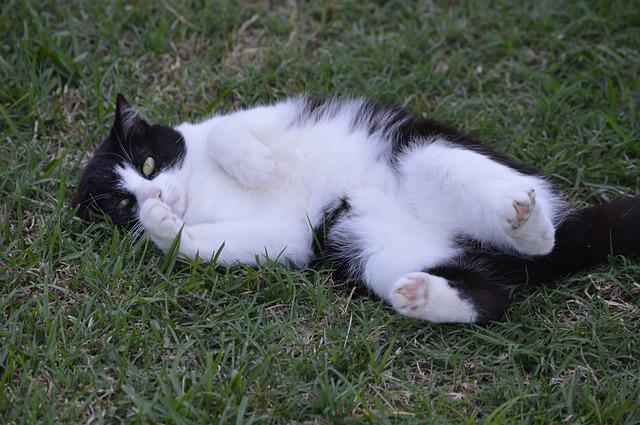
Most tuxedo cats have dog-like personalities. They are loyal, friendly, and super affectionate.
If you have a tuxedo cat for a pet, she’ll often run to greet you at the door. This feline’s easygoing nature enables her to get along with other cats and dogs.
Besides, a tuxedo cat will often come and sit on your lap or lie next to you while you’re asleep.
#6 Tuxedo Cats Are Photogenic
You’ll agree with me that tuxedo cats are naturally dressed to impress. They look cute and handsome in their natural black and white colors.
Besides, most tuxedos aren’t afraid of the camera. Whether sitting, lying, sleeping, or playing these cats’ photos will come out great no matter the background.
Additionally, black and white are perfect complementary colors, which is why there’s hardly a bad picture of a tuxedo cat even with poor lighting or photography skills.
Their striking color pattern, neat appearance, and stylish pose make these cats photogenic.
#7 No Two Tuxedo Cats Are Identical
No two tuxedo cats are similar. They’re unique in the white and black color distribution ratio on their coats due to the white spotting scale.
The white patches on the tuxedo coat are determined by the movement of the pigment cells. Thus, even two identical tuxedo twins will have different markings. The shape of the patches will also be unique for each tuxedo.
#8 All Tuxedo Cats Are Bicolor but Not All Bicolor Cats Are Tuxedo
Bicolor or piebald cats are felines with two colors on their coats one being white. For instance, a cat with a ginger and white coat is a bicolored and so is one with a grey and white coat.
A bicolored tuxedo cat has black and white fur on their coat. Tuxedo cats are different from other bicolor cats due to the way the white patches are arranged on their black coats. The white color of a tuxedo cat is limited to the feline’s belly, chest, paws and face.
A tuxedo cat inherits the white spotting gene which prevents black fur from forming across the cat’s entire body. The black and white coloration in a tuxedo exists on a scale. This scale determines what proportion of the fur is black or white. The white and black spotting scale ranges from 1 to 10 with 1 being completely black and 10 being completely white.
#9 Tuxedo Cats Are Not Necessarily Black And White
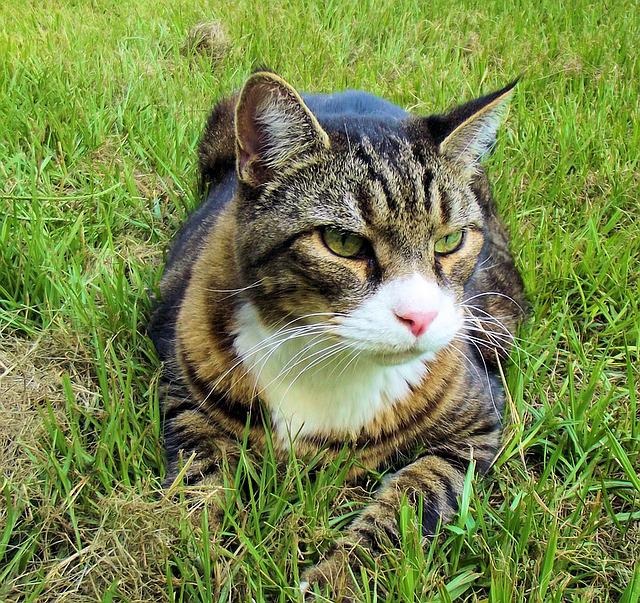
A tuxedo cat doesn’t have to be black and white. The white color can appear in any other coat pattern. For instance, a cat with white patches on a different solid color background such as orange can also be considered to be a tux.
Consequently, a tuxedo’s solid coat color doesn’t have to be black. It can be any other color including grey, orange, silver, and even tortoiseshell provided there are white patches on the belly, chest, and paws.
#10 Tuxedo Cats Do Not Necessarily Need To Have A Tuxedo Parent
A tuxedo cat doesn’t need to have two tuxedo cat parents.
A tux kitten can get a white spotting gene from one parent and a black spotting gene from another parent. If one parent has the tuxedo pattern, they will pass it to their offspring.
In addition, a tuxedo cat can be born even if neither of the parents has tuxedo markings. All the kitten needs is to inherit the white spotting gene and black spotting gene (primary color) from either of the parents.
#11 Tuxedo Cats Usually Have Green Or Yellow Eyes

The gene responsible for coat coloration is also responsible for eye color.
Most tuxedo cats have bright green, bluish-green or golden green eyes. Some may have golden or yellowish eyes.
While most kittens are born with blue eyes, the tuxedo kitten’s blue eyes will almost always transform into shades of green.
#12 Egyptian Worshipped Tuxedo Cats
Ancient Egyptians had cats as household companions and they also worshipped them. They worshipped tuxedo cats because they believed they brought good luck and fortune.
Besides, several ancient Egyptian deities were depicted with cat-like heads. But did you know that 70% of the cats scribbled in ancient artworks, pyramids and royal tombs were tuxes? This makes these cats the most depicted felines in ancient Egypt.
#13 Tuxedo Cats Are Celebrities
Sylvester James Pussycat, Sr, the cat from Looney Tunes, Tom from Tom and Jerry, Dr Seuss’s character The Cat in the Hat, Felix the Cat and Mr Mistoffelees from the Broadway show Cats are just a few examples of celebrity tuxedo cats.
#14 Celebrities Love Tuxedo Cats
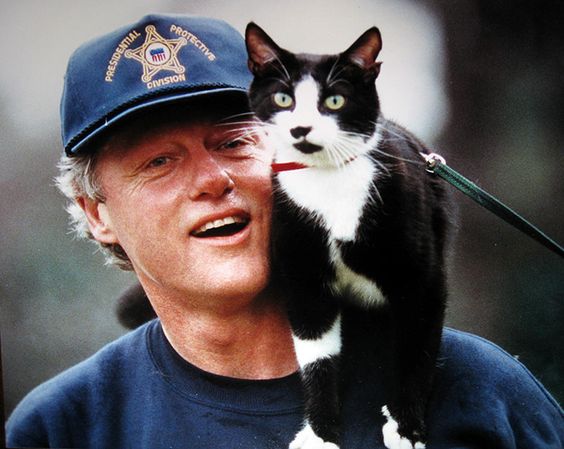
Famous persons including William Shakespeare, Sir Isaac Newton, and Beethoven owned tuxedo cats.
Former US president Bill Clinton lived with a tuxedo cat called Socks in the white house.
You’ll certainly agree with me that a tuxedo kitty is a worthy companion just like these famous personalities did.
#15 Tuxedo Cats Have Made History
In 1948, during World War II, a tuxedo cat named Simon was picked by a British seaman to become the ship’s mouser and ratter. Simon kept rodents away from the ship and prevented them from eating the food supply or chewing the ship’s ropes and wood. This cat later received two awards; the Amethyst campaign ribbon and the Dickin medal for his great work.
A Canadian tuxedo cat named Tuxedo Stan ran for mayor of Halifax in 2012. Even though he didn’t win, he created awareness for homeless cats that infested Halifax.
As a result of Stan’s mayoral bid, the Halifax City Council provided a grant to help spray and neuter homeless cats within the city. Stan passed away in 2013 but his legacy to improve the welfare of felines in Halifax continues with the help of the Tuxedo Party Movement of the Canada Cat Welfare Society.
#16 The Richest Cat In The World Was A Tuxedo Cat
A tuxedo cat named Sparky inherited 6.3 million dollars when his cat parent passed away in 1998 which made him wealthier than many humans.
Sparky was by far the wealthiest cat at the time until a wealthy widow, Maria Assunta also left her black cat Tommaso, a fortune worth over 13 million dollars in 2011.
#17 Tuxedo Cats Are Explorers

Tuxedo cats are great explorers, their black and white coats camouflage well in the wild and at night. You are likely to find your tuxedo cat hidden in inaccessible areas of your house.
A tuxedo cat named Roderick is the only cat known to have reached the top of the tallest mountain, Mount Everest.
